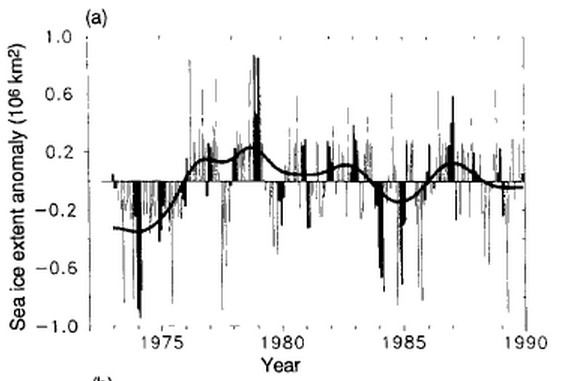Report: Carbon tax drags Australian economy down under
…Report: ‘Arctic Ice Almost As Extensive As It Was 42 Years Ago in 1971’
The IPCC report from 1990 showed that ice extent was low in the early 1970s.
www.ipcc.ch/ipccreports/far/wg_I/ipcc_far_wg_I_full_report.pdf
NCAR also noted that prior to 1972, ice extent was low.…
New paper finds climate model assumptions on cloud-aerosol interactions may be off by 100%: Published in Atmospheric Chemistry and Physics
New paper finds climate model assumptions on cloud-aerosol interactions may be off by 100%
http://hockeyschtick.blogspot.com/2013/09/new-paper-finds-climate-model.html
A paper published today in Atmospheric Chemistry and Physics demonstrates the huge uncertainties of computer modeling of aerosol–cloud interaction effects, which are one of the “major sources of uncertainty in climate models.” According to the authors, the standard deviation around the mean cloud condensation nuclei varies globally between a minimum of about ± 30% over some marine regions to ± 40–100% over most land areas and high latitudes. This is only one of the factors affecting clouds in climate models, and clouds are but one of the many major uncertainties in climate models.
Dr. Judith Curry points out why climate models might be wrong in her “uncertainty monster” paper, and has pointed out for years the need for realistic assessments of the uncertainty of climate projections. This paper takes one step in that much need direction and shows only a tiny fraction [but still huge] of the “uncertainty monster.” Meanwhile, the IPCC remains blissfully ignorant of the “uncertainty monster” and increases its confidence level from 90 to 95% without any basis in statistical analysis or science.
Atmos. Chem. Phys., 13, 8879-8914, 2013www.atmos-chem-phys.net/13/8879/2013/doi:10.5194/acp-13-8879-2013
The magnitude and causes of uncertainty in global model simulations of cloud condensation nucleiL. A. Lee1, K. J. Pringle1, C. L. Reddington1, G. W. Mann1, P. Stier2, D. V. Spracklen1, J. R. Pierce3, and K. S. Carslaw11Institute for Climate and Atmospheric Science, School of Earth and Environment, University of Leeds, Leeds, UK2Department of Physics, University of Oxford, Oxford, UK3Department of Atmospheric Science, Colorado State University, Fort Collins, Colorado, USAAbstract. Aerosol–cloud interaction effects are a major source of uncertainty in climate models so it is important to quantify the sources of uncertainty and thereby direct research efforts. However, the computational expense of global aerosol models has prevented a full statistical analysis of their outputs. Here we perform a variance-based analysis of a global 3-D aerosol microphysics model to quantify the magnitude and leading causes of parametric uncertainty in model-estimated present-day concentrations of cloud condensation nuclei (CCN). Twenty-eight model parameters covering essentially all important aerosol processes, emissions and representation of aerosol size distributions were defined based on expert elicitation. An uncertainty analysis was then performed based on a Monte Carlo-type sampling of an emulator built for each model grid cell. The standard deviation around the mean CCN varies globally between about ±30% over some marine …
Has Arctic Ice Extent Reached Its Minimum?
Has Arctic Ice Extent Reached Its Minimum?
http://notalotofpeopleknowthat.wordpress.com/2013/09/04/has-arctic-ice-extent-reached-its-minimum/
By Paul Homewood
http://nsidc.org/data/seaice_index/index.html
Its not clear from the chart, but the data from NSIDC is very clear:
Arctic Ice Extent – million sq km
29th Aug
5.398
30th Aug
5.373
31st Aug
5.319
1st Sep
5.277
2nd Sep
5.340
http://nsidc.org/data/seaice_index/archives.html
It is still quite possible that there may be a few more days of melt, but effectively there has been no significant melt for the last 5 days, so it is unlikely there will be any significant losses.
The earliest minimum on record was 2nd Sep 1987.
To put the numbers into perspective, the minimum in 2006 was 5.749 million sq km. The highest figure since then was in 2009, when it fell to 5.054.
Things should become clearer in the next couple of days.
Sent by gReader Pro…

